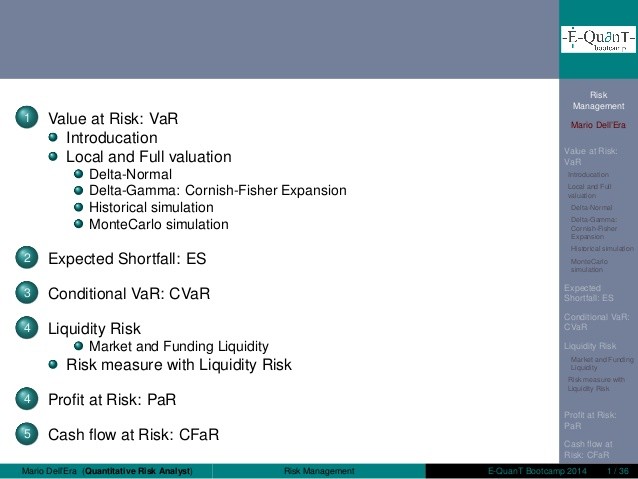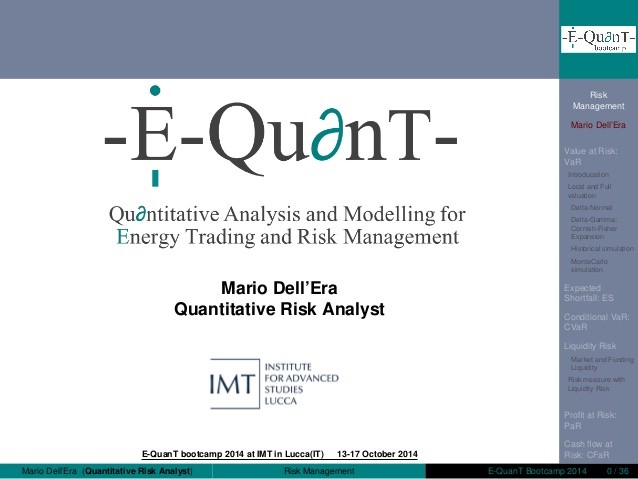What is ProfitatRisk (PaR)
Post on: 16 Март, 2015 No Comment

What is Profit-at-Risk (PaR)?
Profit-at-Risk (PaR) is an expression used to mean several slightly different things by different segments of the industry. PaR, as used at ART . refers to an entire analysis process/philosophy. The basic idea is to produce simulations (forward and backward) of entire trading strategies, including all rebalances, market dynamics, operational issues/costs (e.g. transaction costs, liquidity, credit, etc.), to produce distributions of risk- and capital-adjusted P&L or returns. That is, simulate as much or sufficient degree of the real world trading environment over the entire holding period to see how your strategy would really perform.
In addition, these performance results may then be used further, possibly in conjunction with Efficient Frontier-like (EF) optimisation methods, to select strategies that provide optimal performance for your risk/return profile and mandate. In practice, the EF-like approaches require certain sophistications to make them sensible for real world optimal trading strategy selection.
In short, at ART . PaR means comprehensive/optimal holding period risk-adjusted P&L based trading strategy selection/analysis.
This type of PaR is introduced in
[1] A Trader’s Guide to … The Series — Read Me First! ( please ) Part I and Part II . and
[3] A Trader’s Guide to Quantitative Methods ( Don’t Panic ) — Basic Maths & Stats.
and detailed (including a working PaR simulator) in
[3.a] A Trader’s Guide to Quantitative Methods ( Don’t Panic ) – Monte Carlo Methods

and used extensively in all of the TG2 trading books. Look here [ALL Titles ] for titles with — Trading, or – Vol2: Trading & Position Keeping, in their titles. Snapshots of PaR and its application can be seen in the ARTicles pages.
In other places, PaR may mean something different. For example, in energy trading, PaR is used to mean something less robust compared to PaR as is used here (e.g. no rebalances etc.). Of critical importance, PaR is NOT Value-at-Risk (VaR). In a sense, VaR is a trivial sub-case of PaR, since VaR is very short term, does not consider rebalances/strategies, or indeed many real world effects, and there is certainly no attempt in VaR to asses risk-adjusted performance that optimally suits your risk/return/mandate requirements.
Remember, though PaR is very comprehensive and very sophisticated, use the right tool for the right job. Building/buying PaR machinery can be non-trivial, so be sure that the cost of implementation is consistent with your mandate (see [1] — [3a] above).














